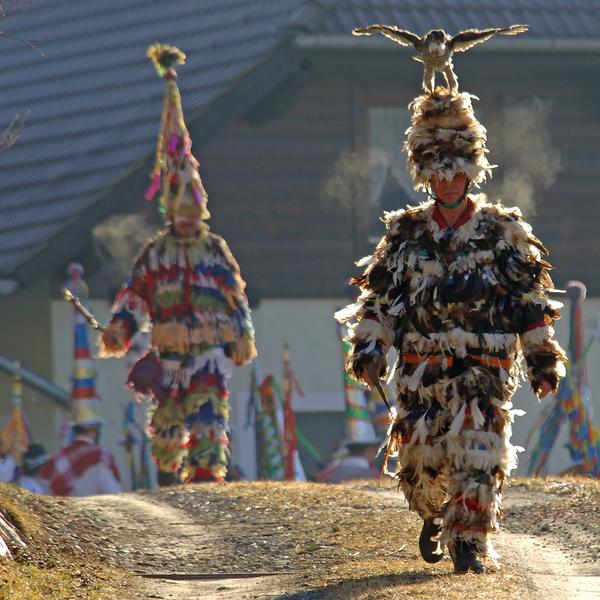The Murau Carnival Run
Social practices in Styria, inscribed 2011
This exhausting and elaborate procession and cadging custom is practised at regular intervals of two to five years on one day of the year, usually Shrove Monday, at several locations in the district of Murau, Styria. The participants progress from farm to farm either by vehicle or on foot and have to overcome obstacles: either climbing over a chain (called a "Speng") blocking their way or accepting the challenge to a wrestling match. Distances of up to 30 kilometres are covered on this day. At 7 p.m., all groups must be at the church in order to take part in the final "Kranzl" dance.
The attire of the carnival runners is a throwback to the clothing formerly worn by threshers and vary slightly from village to village. The event is organised either by local clubs such as the rural youth organisation, fire brigade, or music clubs, or sometimes also by coalitions of young men from the local community not organised as an association, groups formed solely for the carnival run. The residents of the houses and farms that are visited as well as the spectators are involved in the event as well.
All ages and social strata are represented among the carnival runners. For the young males of the community, it is seen as a matter of honour to participate, to persevere, to prove oneself in the assigned role, and over time to move up to a higher position within the prescribed hierarchy. According to the applicant, declining population and the co-opting of the carnival run by the tourism sector are among the potential risks to the preservation of this tradition.
Downloads
- Application form (in German only) 243 KB (doc)
- Expertise Orac-Stipperger (in German only) 35 KB (pdf)
- Expertise Frieß (in German only) 21 KB (pdf)


![[Translate to EN:] © J. Ségur/ZED, with the permission of UNESCO](/fileadmin/_processed_/d/b/csm_Convention-2003-IKE_0832a6a47d.jpg)
![[Translate to EN:] © ÖUK](/fileadmin/_processed_/3/9/csm_P1011318_7eac86402f.jpg)

![[Translate to EN:] © Weitblickfilm](/fileadmin/_processed_/9/8/csm_Workshop_17_2dee1e1fd8.jpg)